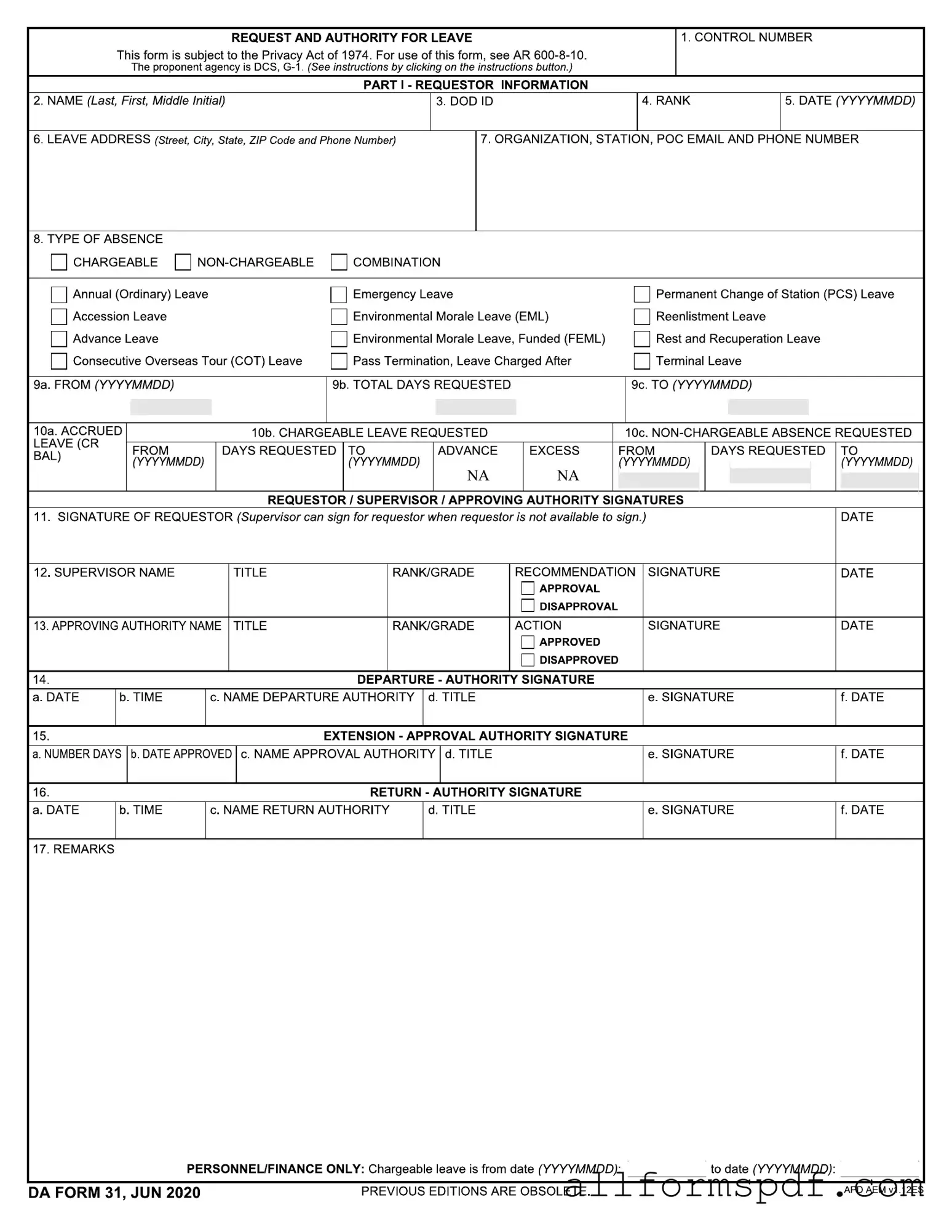Completing the DA 31 form can be a straightforward process, but several common mistakes can lead to delays or complications in leave requests. Awareness of these pitfalls can help ensure a smoother experience when applying for leave.
One frequent error is failing to provide complete requestor information. The form requires specific details such as name, DOD ID, and rank. Omitting any of these can result in the request being returned for correction. It's essential to double-check that all fields are filled out accurately and legibly.
Another common mistake involves the leave address. Applicants sometimes provide an incomplete or incorrect address, which can hinder communication during the leave period. It is advisable to include the full street address, city, state, ZIP code, and a reliable phone number to ensure that the requestor can be reached if necessary.
Many individuals also overlook the importance of specifying the type of absence. The form includes various options such as chargeable, non-chargeable, or a combination of both. Selecting the wrong type can lead to misunderstandings about the nature of the leave, affecting both the approval process and the individual’s leave balance.
Inaccuracies in the dates requested for leave are another common issue. Applicants may mistakenly enter the wrong date format or fail to ensure that the start and end dates align correctly with the total days requested. This can create confusion and may require additional clarification from supervisors or approving authorities.
Some individuals neglect to fill out the accrued leave section accurately. This section is crucial for determining how much leave can be granted. If the accrued leave balance is not reported correctly, it could result in the denial of the leave request.
Additionally, signatures are often a source of errors. The signature of the requestor must be included, and in cases where the requestor is unavailable, the supervisor's signature is necessary. Failing to obtain the required signatures can delay the processing of the leave request.
Another mistake is not providing sufficient details in the remarks section. This section allows requestors to clarify any special circumstances or requests related to their leave. Omitting this information can lead to misunderstandings and may affect the approval process.
Lastly, individuals sometimes forget to review the instructions provided with the form. These instructions contain valuable information that can guide applicants through the completion process. Ignoring these guidelines can lead to errors that might have been easily avoided.
By being mindful of these common mistakes, individuals can enhance the likelihood of a successful leave request. Attention to detail is key when filling out the DA 31 form.
